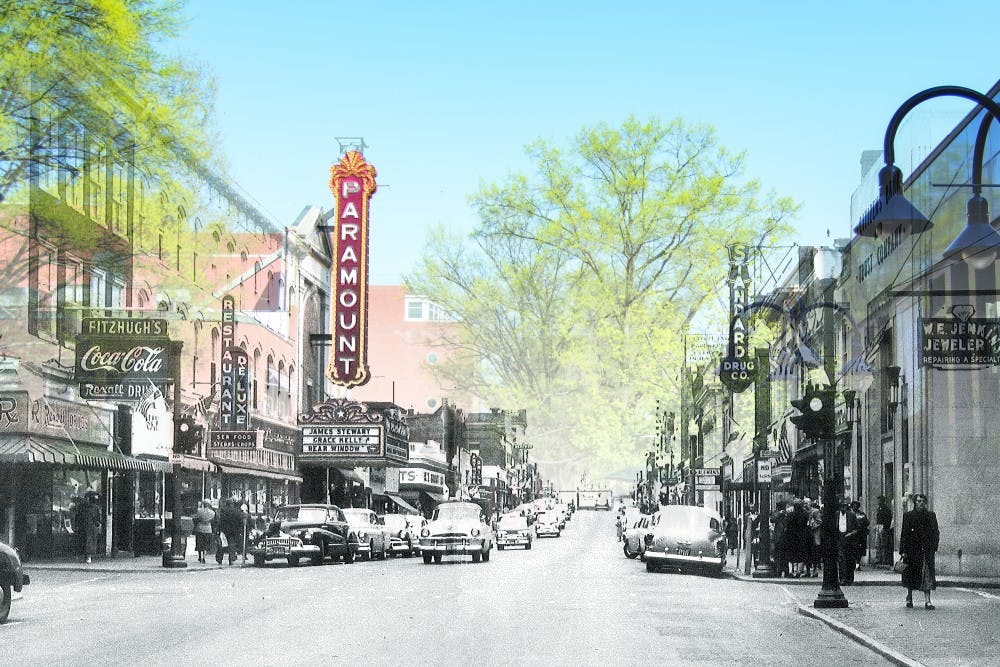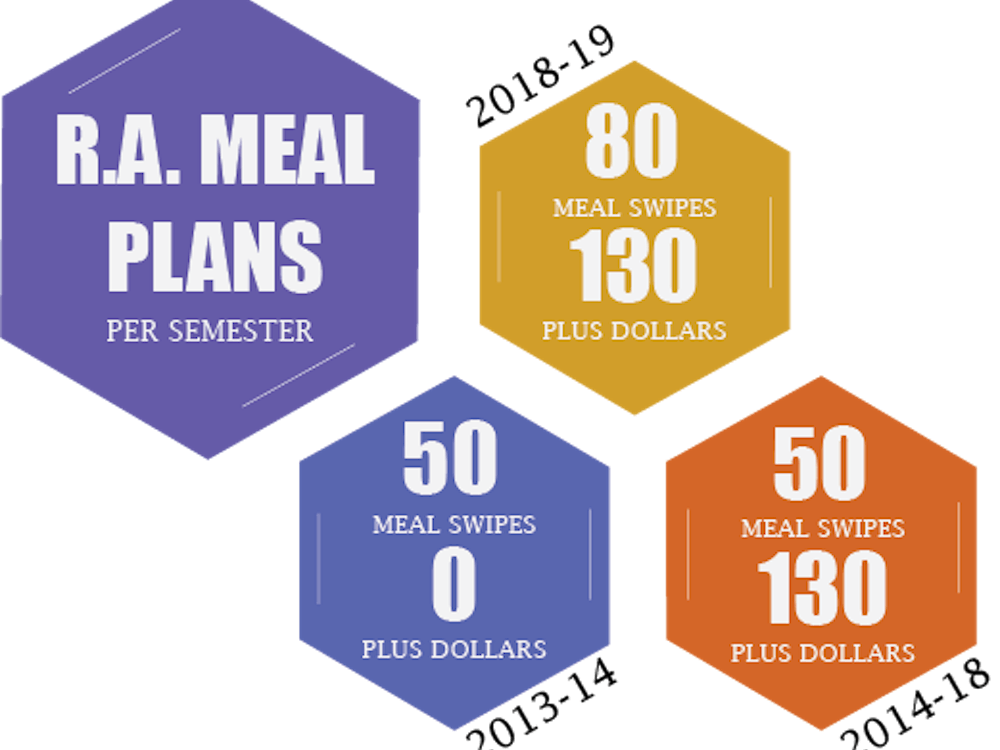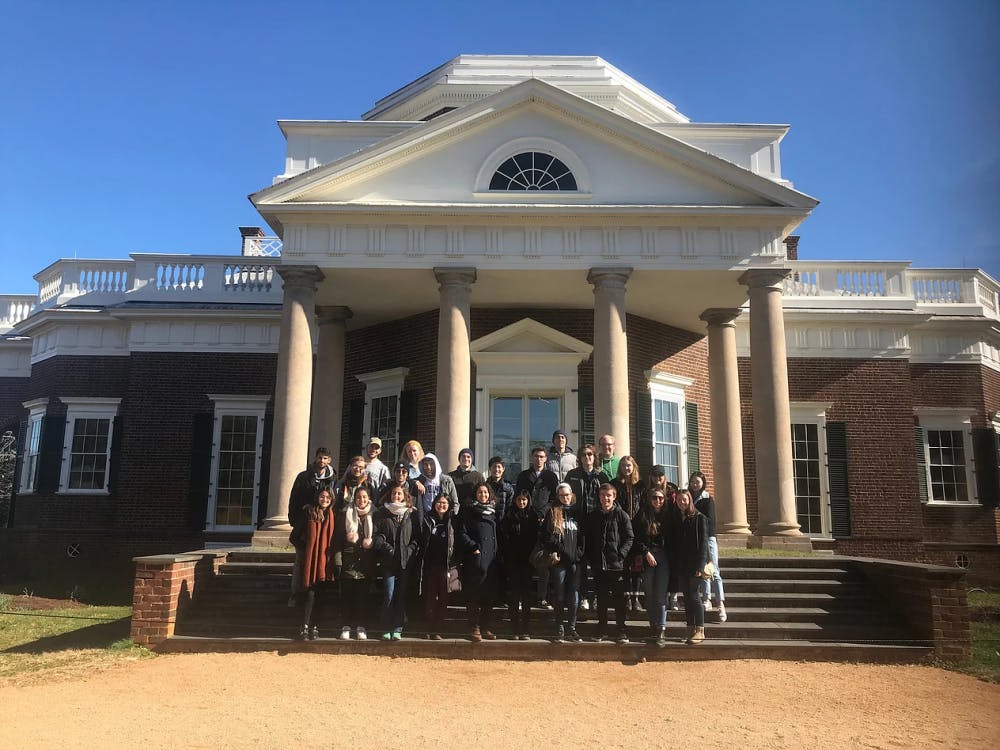Humming with the clatter of heels against red brick, chatter at park benches and the chorus of street performers, the Charlottesville Downtown Mall is thought by many residents to exude an inexplicable charm — one that has allowed Main Street to maintain a thriving business scene for over 40 years. Amidst the bustle of foot traffic, a handful of street vendors sell artisan goods ranging from elaborately embellished scarves to hand-blown glass flower pots. Stretching eight blocks of brick-paved, tree-lined walkway, the pedestrian mall is one of the longest of its kind. More than 120 shops and 30 restaurants occupy the space, offering a diverse mix of boutiques, tastes and sights.
The Historic Downtown Mall offers an eclectic space for locals, University students and tourists to converge. Since its 1976 inception, the area has undergone countless changes — both physically and symbolically — throughout its transformation into a staple of Charlottesville culture.
What makes it “historic”
Initial murmurings of transforming Charlottesville’s Main Street — a two-way road at the time — into a pedestrian mall began after the 1959 opening of Barracks Road Shopping Center, which threatened to draw business away from the city center. However, Margaret O’Bryant, a longtime Charlottesville resident and librarian at the Albemarle Charlottesville Historical Society, said that the impetus of the project didn’t take off until City Council made the widely-contested decision in 1964 to raze Vinegar Hill, a thriving prominently African-American commercial district on the western end of the mall.
“That has been one of the big thorns in the history of the community, particularly in the African-American community,” O’Bryant said. “A lot of [the Vinegar Hill neighborhood] was not in good shape, which was one of the big angles for moving the project forward to redevelop with the idea to create a better neighborhood that was largely more commercial.”
The demolition of Vinegar Hill resulted in the eviction and subsequent rehousing of 600 residents — 92 percent of whom were African-American — as well as the destruction of 130 buildings. Nonetheless, this often-disputed move was not a unique one — O’Bryant said the City’s choice mirrors a broader theme of post-World War II urban renewal sweeping the United States in the mid-twentieth century. Even still, the land sat vacant until a decade later when the official construction of the mall began — on Jan. 1, 1975 the City put in place barricades preventing traffic through the area and started the tedious work of unearthing Main Street.
“My husband and I moved here in 1975. At that time, Main Street was dug up – there were actually piles of dirt and they were doing construction on the mall,” O’Bryant said. “For someone coming into the community and not having known all the history, it was kind of inexplicable why they had done this to themselves.”
From chain outlets to artisan goods
When the dust of construction finally settled in July of 1976, the final brick of the first, five-block section of the mall was laid in Central Place, thus marking the completion of Charlottesville’s pedestrian mall. After that last brick, large department stores like Miller & Rhoads, Leggetts (now Belk), Woolworths and A&N were among the first to spring up along the brick-lined pathway. Julia Kudravetz, owner of New Dominion Bookshop, recalls buying sneakers from one of those chains.
“There used to be an A&N where I used to get my Chuck Taylors. That’s now the Skybar,” Kudravetz said. “There’s no more good places to get Converse in the Downtown Mall anymore — you can just get Frye boots. That’s a bummer.”
Although small, Kudravetz’s anecdote speaks to the Mall’s quiet transition from a somewhat blue-collar space where locals could buy necessities into the diverse and more artisan small business scene of today. While Kudravetz may lament her newfound inability to buy a pair of Converse, she said she appreciates the quirk and historic authenticity that comes with locally-owned storefronts.
That historic feel, however, did not come immediately. Instead, the mall waited until the late 1980s to achieve popularity, when small businesses finally flocked to the city center. O’Bryant said that the downtown truly took off around the time Tony LaBau opened Chaps Ice Cream in 1985.
“Tony really came along with the mall,” O’Bryant said. “I think he got started largely during the same time the mall did.”
Since then, the mall has evolved into what LaBau proudly describes as the “heart and soul” of the city, offering a car-free space for people to enjoy what he believes to be an authentically local environment. Given the 726 square mile sprawl of the greater Albemarle county, LaBau sees the Downtown Mall as that which brings the city together into one place.
“Downtown is the heart and soul of what makes everything in this City click and [everything] in the outskirts of the City click, business-wise. When people come and visit Charlottesville or Monticello, they don’t say, ‘Let’s go to Wegmans, let’s go to Giant Food, or let’s go to Hollymead,’” LaBau said. “What they do is they come downtown because it’s the heart and the soul of the city.”
Where students and locals converge
While LaBau might see the Downtown Mall as an essential facet of Charlottesville culture, the bulk of the patronage doesn’t appear to stem from the University. Although Charlottesville Area Transportation offers a free bus into the heart of Main Street, student anecdotes reveal that they rarely find themselves in the area.
First-year College student Maddie McGeehan said she typically goes downtown with out-of-town visitors — travelling to the area either via the trolley or by foot.
“[I go] on occasion when people from out of town come or if it's a long weekend,” said McGeehan, laughing. “I always walk because I can’t figure out the bus system.”
Second-year College student Blair Nicol said she regularly volunteers in the area — but rarely patronizes the local businesses.
“I go down there Tuesday mornings for volunteering at the Haven,” Nicol said. “Other than that, [I only go] when my family or boyfriend comes to visit because I don’t spend money.”
Third-year College student Ellie Pare and second-year Engineering student Charlie Haywood cited similar reasons for their rare visits to Main Street, saying that they find themselves in the mall only on special occasions. With a college student budget, they said they are reluctant to regularly patronize the restaurants or shops.
Mike Rodi, owner of Rapture Restaurant, jokingly describes this shortage of student patronage as the “invisible wall on 14th Street” — adding that he thinks students find themselves caught up in University life and often struggle to escape the “strong gravity” of Rugby Road and the Corner. While downtown might act as the heart and soul of residential Charlottesville, it has yet to achieve primacy in student life.
Nonetheless, many students say they brave the journey to attend large events like weekly city markets or to see an occasional concert at the Jefferson Theatre or Sprint Pavilion. LaBau said that he sees events like these as facets of the downtown that bring the entire community together.
“If there’s an event that everybody wants to go to, I don’t think it matters if you’re at the University or whether you’re with the downtown folk and the local community,” LaBau said. “Everybody is mixed together, it’s not segregated in any way.”
Although larger, well-publicized events might cast wider nets, Kudravetz adds that she believes students who regularly venture off Grounds differ slightly from their peers.
“I think the U.Va. students who come down here are a kind of self-selecting breed,” Kudravetz said. “They’re more curious about Charlottesville. They’re not always super into going to frat parties.”
The faces behind the storefronts
Although University students — especially underclassmen without cars — might hesitate to patronize the Mall, the space sees no dearth of business. Yet the crowds that flock to Main Street on any given day aren’t just pursuing tasty food or trendy clothes — Rodi said that the individual people, not just the businesses, allow the Downtown Mall to thrive in a manner unlike other typical shopping centers.
“You have these people that work here who are not just working in the shops,” Rodi said. “You have architects and law firms and stockbrokers. It always struck me that the architects know the names of some of the homeless guys. Not that social divisions don’t exist, but this is a place where they largely get swept aside – at least temporarily.”
Rodi said that this ubiquitous sense of community has allowed the mall to recover from the events of this past summer. In August, the Unite the Right Rally turned deadly when local resident Heather Heyer was killed on the intersection of Fourth Street and Water Street by a car plowing through a crowd of peaceful counter protestors.
This past September and October, the mall suffered a decrease in sales and many business owners reported a significant impact on the number of customers and tourists. However, November’s numbers showed a slight growth in sales, signaling a change from the year’s downward trend, and this upswing continued into 2018. While Rodi admits that the effects of the rally have disincentivized some tourism, he said that Charlottesville residents haven’t altered their perception of the mall. Even with in tourism, Rodi anecdotally added that he believes that Main Street is back on the upswing.
“We’re definitely sensing that things are starting to look rosy again, that we’re starting to see life again — people looking carefree, people doing fun stuff on the mall, kids running up and down,” Rodi said. “There’s diversity — same-sex couples holding hands, every variation of skin color out there on the mall. It’s always been such a welcoming, comfortable, diverse place.”
That diversity and personality inherent in the Downtown Mall — LaBau, Kudravetz and Rodi agree — are that which makes it such an attractive place to be, both as a shopper and shop owner. Moreover, the people within that community — the shop owners, street vendors, performers and patrons — separate Main Street from your average shopping mall.
“I love being around people, I talk to everybody – I talk to homeless people, I talk to rich people, I talk to famous people,” LaBau said. “I love challenging their minds and values. [The mall] is home. It would be hard-pressed for me never to be here again.”





